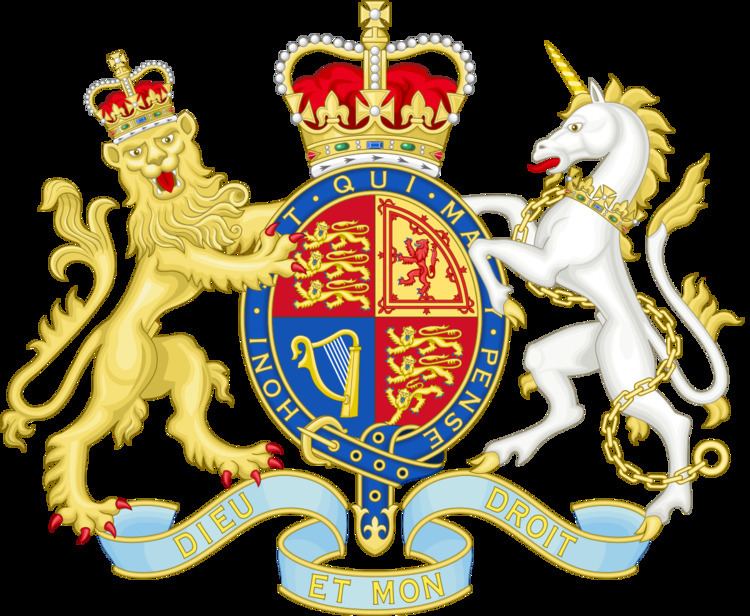Residence Hillsborough Castle Inaugural holder William Whitelaw | Appointer Elizabeth II Formation 24 March 1972 | |
 | ||
Style The Right Honourable
(Formal prefix)
Northern Ireland Secretary Precursor Lord Lieutenant of Ireland
Governor of Northern Ireland | ||
Her Majesty's Principal Secretary of State for Northern Ireland, informally known as the Northern Ireland Secretary, is the principal secretary of state in Her Majesty's Government with responsibilities for Northern Ireland. The Secretary of State is a Minister of the Crown who is accountable to the Parliament of the United Kingdom and is the chief minister in the Northern Ireland Office. As with other ministers, the position is appointed by the British monarch on the advice of the Prime Minister.
Contents
The position is normally described simply as 'the Secretary of State' by residents of Northern Ireland.
Formerly holding a large portfolio over home affairs in Northern Ireland, the current devolution settlement has lessened the Secretary of State's role, granting many of the former powers to the Northern Ireland Assembly and Northern Ireland Executive. The Secretary of State is now generally limited to representing Northern Ireland in the UK cabinet, overseeing the operation of the devolved administration and a number of reserved and excepted matters which remain the sole competence of the UK Government e.g. security, human rights, certain public inquiries and the administration of elections.
Created in 1972, the position has switched between Members of Parliament from the Conservative Party and Labour Party. As Labour has not fielded candidates in Northern Ireland and the Conservatives have not had candidates elected to Northern Ireland Assembly or for House of Commons seats in the province, those appointed as Secretary of State for Northern Ireland have not represented a constituency in Northern Ireland. This contrasts with the Secretary of State for Scotland and the Secretary of State for Wales.
The Secretary of State resides in Hillsborough Castle, the previous residence of the Governor and the official government and royal residence in Northern Ireland, and exercises their duties through the Northern Ireland Office.
History
Historically, the principal ministers for Irish (and subsequently Northern Ireland) affairs in the UK Government and its predecessors were:
In August 1969, for example, Home Secretary James Callaghan approved the sending of British Army soldiers to Northern Ireland. Scotland and Wales were represented by the Secretary of State for Scotland and Secretary of State for Wales from 1885 and 1965 respectively but Northern Ireland remained separate, due to the devolved Northern Ireland Government and Northern Ireland Parliament.
The office of Secretary of State for Northern Ireland was created following the suspension, then abolition, of the Northern Ireland Parliament, following widespread civil strife. The UK Government was increasingly concerned that the Northern Ireland Government (at Stormont) was losing control of the situation. On 24 March 1972, it announced that direct rule from Westminster would be introduced. This took effect on 30 March 1972.
The post effectively filled three roles which existed under the previous Stormont regime:
Direct rule was seen as a temporary measure, with a power-sharing devolution preferred as the solution, and was annually renewed by a vote in Parliament.
The Sunningdale Agreement in 1973 resulted in a brief, power-sharing Northern Ireland Executive, from 1 January 1974, which was ended by the loyalist Ulster Workers' Council strike on 28 May 1974. The strikers opposed the power-sharing and all-Ireland aspects of the new administration.
The Northern Ireland Constitutional Convention (1975–1976) and Northern Ireland Assembly (1982–1986) were unsuccessful in restoring devolved government. After the Anglo-Irish Agreement on 15 November 1985, the UK Government and Irish Government co-operated more closely on security and political matters.
Following the Belfast Agreement (also known as the Good Friday Agreement) on 10 April 1998, devolution returned to Northern Ireland on 2 December 1999. This removed many of the duties of the Secretary of State and his Northern Ireland Office colleagues and devolved them to locally elected politicians, constituting the Northern Ireland Executive.
The devolved administration was suspended several times (especially between 15 October 2002 and 8 May 2007) because the Ulster Unionist Party and Democratic Unionist Party were uncomfortable being in government with Sinn Féin when the Provisional Irish Republican Army had failed to decommission its arms fully and continued its criminal activities. On each of these occasions, the responsibilities of the ministers in the Executive then returned to the Secretary of State and his ministers. During these periods, in addition to administration of the region, the Secretary of State was also heavily involved in the negotiations with all parties to restore devolved government.
Power was again devolved to the Northern Ireland Assembly on 8 May 2007. The Secretary of State retained responsibility for policing and justice until most of those powers were devolved on 12 April 2010.
List of office holders
Colour key
Conservative Labour
